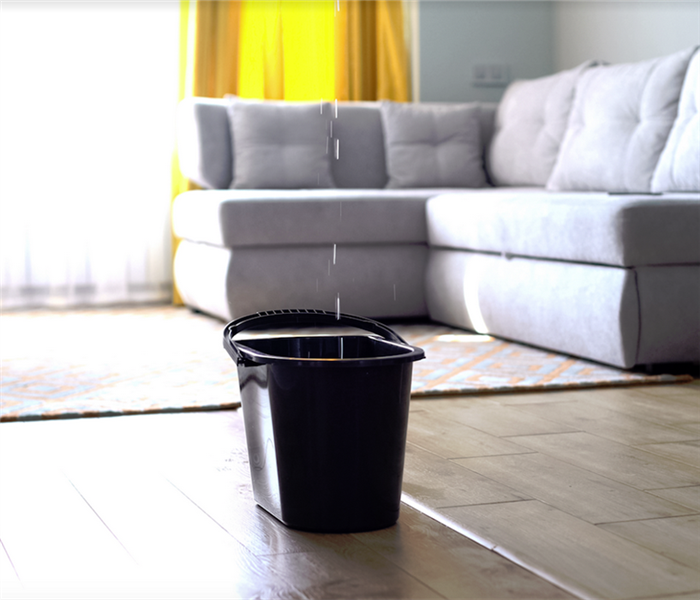How Can Niagara Falls Homeowners Preserve Hardwood Floors After Water Damage?
10/18/2020 (Permalink)
 Make sure to act quickly when water damage affects your hardwood floors. Contact our certified technicians to remediate the damage.
Make sure to act quickly when water damage affects your hardwood floors. Contact our certified technicians to remediate the damage.
IICRC-Certified Restoration Technicians Can Perform Water Removal Services for Niagara Falls Homeowners
Many Niagara Falls homeowners enjoy the polish and longevity of hardwood floors in their residences. However, this long-lasting flooring solution still needs repairs and restoration every 10 to 30 years and requires immediate care after a pipe leak or other water damage situation. Without fast mitigation, moisture exposure can create permanent damages and lead to higher repair and replacement expenses.
SERVPRO technicians can provide water removal services for Niagara Falls homeowners, including drying and preservation of hardwood flooring when possible. This experienced team of restoration pros renders water damage mitigation per restoration industry standards as determined by the Institute of Inspection Cleaning and Restoration Certification (IICRC).
What Methods Can Homeowners Use to Protect Hardwood Floors from Water?
There are a variety of proactive measures homeowners can undertake to preserve their hardwood floors even before installation begins, including the following:
- Inspect plumbing before installing wood floors. Plumbing leaks and burst pipes are among the most common causes of water-damaged hardwood flooring in Niagara Falls. Contact a licensed plumber to take a look at your plumbing and make any necessary repairs.
- Clean floors carefully. Sweeping, vacuuming, and mopping with conservative amounts of moisture regularly all go a long way toward preserving your hardwood flooring and minimizing issues with water, dirt, dust, and scratches.
- Protect your floors with a strong sealant. A reliable sealant, like wax or polyurethane, provides an aesthetically pleasing finish that also protects your hardwood. While these sealants cannot ensure a completely waterproof surface, they can offer you extra time to clean up moisture that might otherwise damage your floorboards. Wax sealants only need to be reapplied on an annual basis, while a coat of polyurethane lasts approximately three to four years at a time.
- Minimize contact with water as much as possible. Moisture, especially in high traffic areas of your home, can accumulate quickly from day-to-day use. Clean up spills as soon as possible, avoid leaving damp objects like shoes and towels on the floor, and set aside a designated area for wet items, particularly shoes and umbrellas.
However, even with meticulous care and attention, accidents and disasters can happen. Your local SERVPRO is ready to serve Niagara Falls properties with cleanup and restoration at any time of the day or night, including weekends and holidays.
When Do Hardwood Floors Require Refinishing Versus Replacement?
Refinishing is typically performed every 10 to 12 years. This process entails sanding down old sealants and damages to return the floor to a smooth, scratch-free condition. After sanding, a fresh coat of sealant is applied to protect the surface of your flooring.
Niagara Falls homeowners may notice the following signs that can indicate that it is time to consult with a hardwood flooring specialist about refinishing:
- A lackluster shine.
- Scratches and scuff marks from furniture and daily use.
- An uneven finish.
- Stains, and dirt buildup, especially in high-traffic areas.
Refinishing is generally a more cost-effective option than replacing planks. However, water damage can render planks too damaged for refinishing in some areas. Common hardwood flooring issues that may necessitate replacement include:
- Excessive warping, cupping, cracking, or buckling of planks.
- Microbial growth from prolonged moisture exposure.
If your hardwood flooring requires repairs, your local SERVPRO team can make the necessary fixes as well as extract excess moisture from your floors and subfloor.
Can SERVPRO Technicians Salvage Water-Damaged Hardwood Flooring?
SERVPRO professionals take cleanup and repair of hardwood flooring seriously. While hardwood is often salvageable after a water damage incident, special care is necessary to ensure that flooring returns to a standard moisture content without further damaging floorboards. Restoration technicians measure the moisture content of your hardwood with moisture sensors calibrated for wood flooring.
Structural drying technicians must take a plethora of factors into account when restoring hardwood floors, including the following:
- Floorboards can facilitate microbial growth when the moisture content is above 20%. Mold proliferation risk can be addressed with EPA-registered biocides in tandem with structural drying equipment.
- Vapor barrier sealants on your flooring, like polyurethane, can impact the efficacy of moisture removal equipment and may require partial or full removal to salvage your floors. Technicians consult with both you and your insurance adjuster about whether to remove sealants or facilitate airflow with tools like pin rollers.
- Hardwood often needs drying both above and below the planks to remove moisture. Depending on the situation at hand, this strategy can eliminate the need to perforate or remove sealants.
SERVPRO of North Niagara County can mitigate damage quickly with service that shows We’re Faster To Any Size Disaster. Call (716) 299-0330 to have an emergency response team on your property within hours of your initial contact.






 24/7 Emergency Service
24/7 Emergency Service